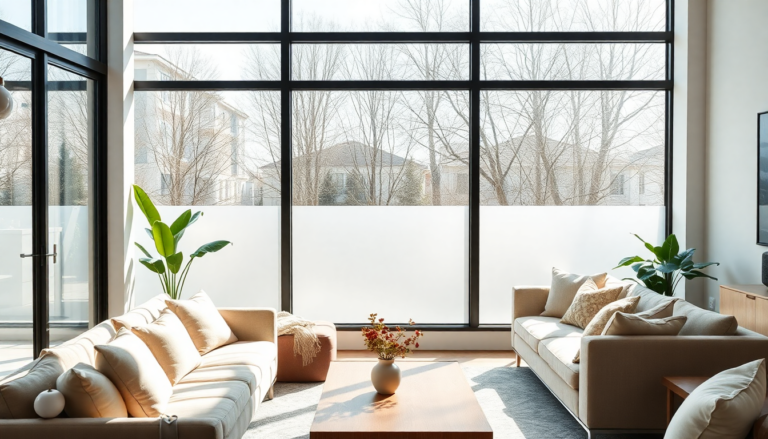Argomenti trattati
Imagine a home where your windows can turn from crystal clear to opaque with just a touch of a button. Sounds like something out of a sci-fi movie, right? Welcome to the world of smart glass, where technology meets modern home design, bringing both style and functionality to your living space. Designers like Sara Swabb are leading the charge in integrating this cutting-edge technology, offering homeowners not just a view, but a complete transformation of their living environment.
What is smart glass?
Smart glass, often referred to as switchable glass, represents a leap forward in window technology. This innovative material allows homeowners to control the degree of privacy and sunlight entering their spaces. When you think about it, it’s a bit like having a dimmable light—only for your windows. At its core, smart glass uses advanced technologies, such as suspended particle devices or electrochromic materials, to change its opacity. Imagine being able to switch from a sunny view to a cozy, private ambiance with the press of a button. How cool is that?
But that’s not all. This technology isn’t just about aesthetics; it also plays a pivotal role in energy efficiency. In the summer, smart glass can block out harsh sunlight, keeping your interior cool and reducing air conditioning costs. Conversely, during winter months, it can allow maximum sunlight to warm your space naturally. So, it’s not just a luxury; it’s a smart investment for your home.
The design possibilities
When Sara Swabb embarked on a project overlooking the stunning Magothy River in Maryland, she faced a unique challenge—how to maintain the breathtaking view while ensuring privacy and security. Enter smart glass. For homes like this, where safety is paramount and the view is too beautiful to block, smart glass provides an elegant solution. Rather than relying on traditional curtains or blinds that can clutter the look of a room, smart glass maintains a sleek and modern aesthetic.
Imagine stepping into a bathroom that seamlessly transitions from clear to frosted, allowing natural light to flood in while keeping your privacy intact. Or picture a home gym where your expensive equipment can be hidden from view when guests arrive. Designers like Eva Lindsell utilize smart glass in transom windows or even in lofted bedrooms to create versatile spaces that adapt to your lifestyle.
Installation options: new builds vs. retrofitting
Thinking about incorporating smart glass into your home? The installation process can vary based on your needs. For new constructions, smart glass can be integrated directly into the window assembly, offering a seamless appearance and maximum efficiency. However, if you’re retrofitting an existing home, a film can be applied over your current windows. While this is often more cost-effective, it might not achieve the same polished look or functionality as fully integrated smart glass.
Peter Miles from The Drawing Board emphasizes the importance of considering long-term benefits. Integrated systems offer streamlined warranties and support, while retrofitted options may lead to complications down the line. Personally, I remember when I was renovating my own space and opted for the easier route; the headaches I faced later made me wish I’d invested in a more cohesive system from the start!
Challenges and considerations
Of course, smart glass isn’t without its challenges. For one, it requires an electrical current to operate, which means planning for outlet placement during installation. This aspect can be a bit tricky, especially in older homes where electrical systems may not be up to date. But don’t let that deter you; many contractors are now becoming accustomed to integrating this technology into their designs.
Another thing to consider is the cost. Smart glass is typically seen as a premium feature, with prices ranging from $100 to $200 per square foot for fully integrated systems, compared to the average window price of $18 to $30 per square foot. But here’s a thought: as more companies begin to adopt this technology, prices may eventually come down. So, keep an eye on market trends!
Sustainability and future potential
One of the most exciting aspects of smart glass is its potential for sustainability. Swabb expresses enthusiasm over the idea that smart glass could eventually generate electricity through solar energy. Imagine homes in sunny locations, like Tahoe or along riverbanks, utilizing smart glass to harness solar power without sacrificing their views! This brings to mind the phrase, “the best of both worlds,” doesn’t it?
Moreover, by controlling light and heat entry, smart glass can significantly reduce energy bills, making it an appealing choice for eco-conscious homeowners. So, while it may feel like a luxury today, it could very well be a standard feature in tomorrow’s homes.
In conclusion, smart glass is more than just a trend; it’s a glimpse into the future of home design. As technology continues to evolve, the possibilities are endless. Whether you’re looking to enhance your property’s aesthetics, improve energy efficiency, or simply upgrade your living experience, smart glass might just be the solution you’ve been waiting for.

